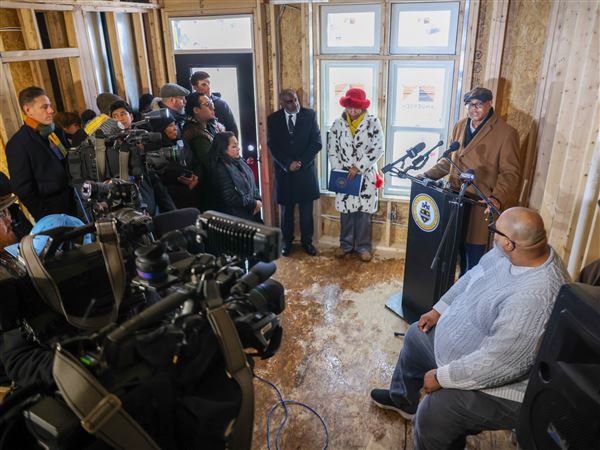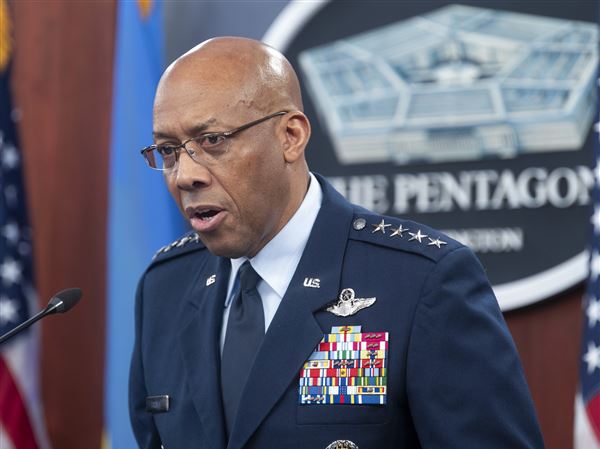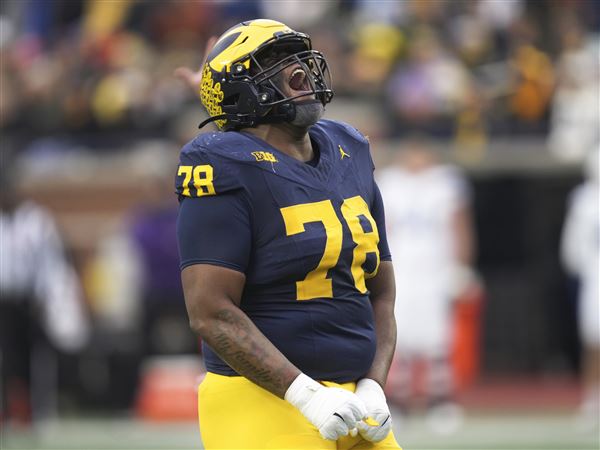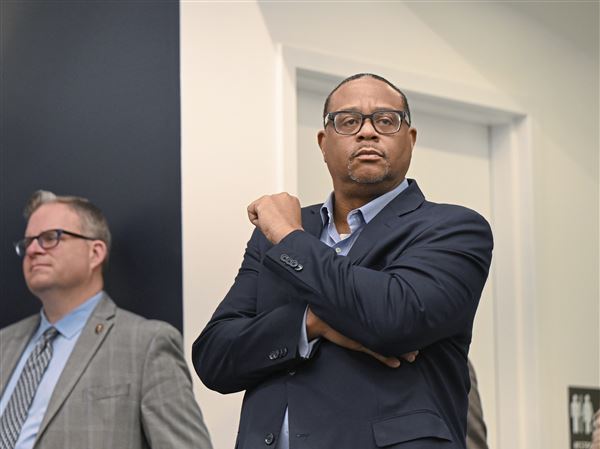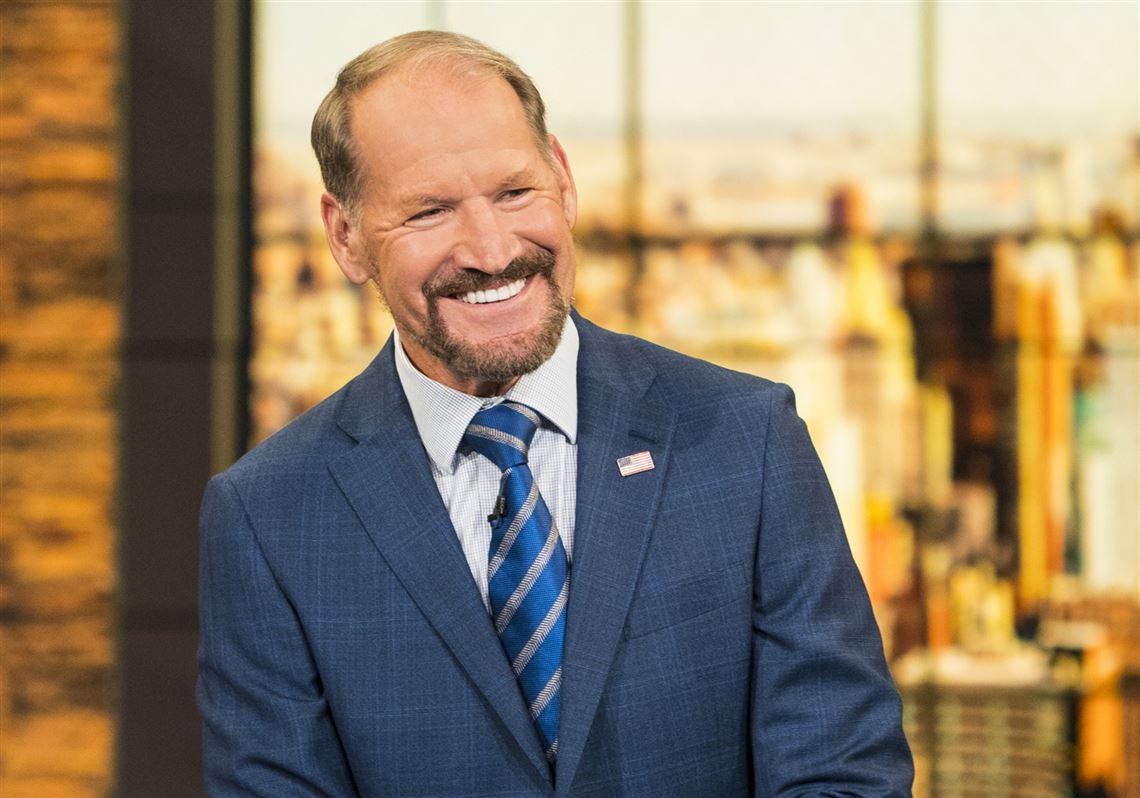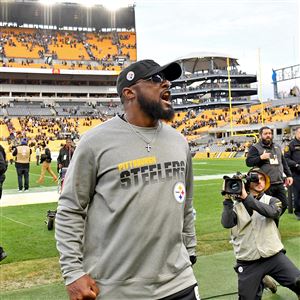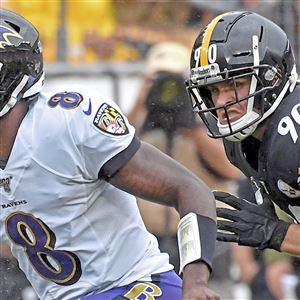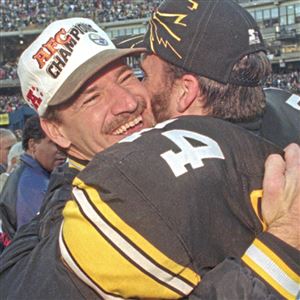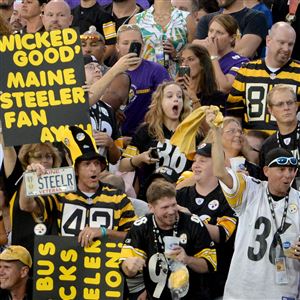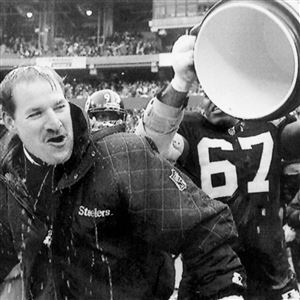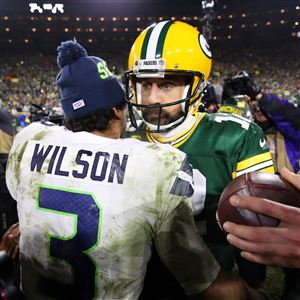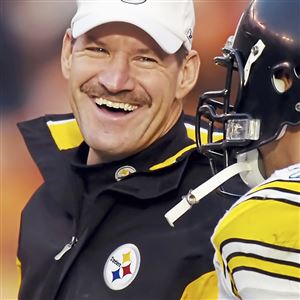Bill Cowher was given the surprise of a lifetime, right there on national television, when he learned he was going to be inducted in the Pro Football Hall of Fame. But none of the people who worked with him, played for him or even hired him was surprised.
“I was totally blindsided,” Cowher said. “I had come to grips I wasn’t going to get in and I’m OK with that. I never thought I would get in to begin with. I had already put closure to it.”
And then Cowher, 62, saw Dave Baker, president and chief executive officer of the Pro Football Hall of Fame, suddenly appear on the set of “The NFL Today” pregame show Saturday night, right when he was talking about Lamar Jackson and the Baltimore Ravens.
In a moment that has flooded social media with likes and retweets, Baker told an emotional Cowher on national television of his selection as part of the Centennial Class of 2020. Waiting behind stage were Cowher’s wife, Veronica, and daughter Meagan, who were told of the surprise only an hour earlier and were rushed to the CBS Studio.
“They know our family pretty good,” Cowher said. “We can’t keep secrets.”
The newest member of the @ProFootballHOF: Bill Cowher.
— CBS Sports (@CBSSports) January 12, 2020
Congratulations, @CowherCBS! #PFHOF20 pic.twitter.com/s5f1gXuDfO
And so began a whirlwind 24-hour period in which Cowher received 254 text messages and 50 emails from former players, coaches and friends, everyone from members of his first coaching staff and Super Bowl team to the Steelers hierarchy of president Art Rooney II, general manager Kevin Colbert and his successor, coach Mike Tomlin.
Cowher, a Crafton native who went to Carlynton High School, won one Super Bowl, eight division titles and made the playoffs in 10 of his 15 years with the Steelers. He also took the 1995 Steelers to Super Bowl XXX, where they lost to the Dallas Cowboys.
“We won a lot of games, we brought playoff games to the city of Pittsburgh, we won playoff games,” Cowher said over the phone Sunday night after working the divisional playoff game between the Kansas City Chiefs and Houston Texans. “I remember the joy that brought to a city. For a kid from Crafton, for Dan Rooney to take a chance on a 34-year old kid, I couldn’t imagine working anywhere else. That’s why I never thought about coming back [to coach]. I stepped down for family and have had no regrets doing that.”
Then he added, “There’s three people on this day that I really wish could be here — my mom, my dad and Kaye,” a reference to his late wife who died in 2010.
When Cowher resigned on Jan. 5, 2007 — 11 months after winning his first Super Bowl — his 149 regular-season victories ranked 20th all time and second to Chuck Noll (193) in team history. He became only the second coach to make the postseason in each of his first six years in the league, behind legendary Paul Brown.
Largely unnoticed is that eight of his assistant coaches, including three from his original staff, went on to become NFL head coaches for the first time.
“Bill has no weaknesses but his greatest strength is how he was in front of the team and how he interacts with the team,” said former Steelers defensive coordinator Dick LeBeau, who was inducted into the Pro Football Hall of Fame in 2010 as a player and coach. “He had the ability to keep everybody focused on the next snap, the next quarter, the next game. He had a rare vision. I thought he was really talented in those areas.”
Cowher is the second former Steelers coach, along with Noll, and the 24th member of the organization to be inducted into the Hall of Fame. His selection sets up what could be another big summer in Canton, Ohio, for Steelers fans because two former players — safety Troy Polamalu and guard Alan Faneca — are among the final 15 modern-era finalists for the Class of 2020 induction.
Cowher was 34 when he was hired by the Steelers on Jan. 22, 1992 — three years younger than Noll when he was hired in January 1969.
“The first impression was that he was young and should we hire a guy this young,” Rooney II said, recalling the time Cowher was chosen over Baldwin native Dave Wannstedt to succeed Noll. “The more we talked to him, the more comfortable we got. You always ask yourself is this the kind of guy who can get in front of room and keep their attention, and he really was. He has that kind of presence. The fact he was from Pittsburgh was just a little bit of icing on the cake because he really brought a Pittsburgh attitude to the team.”
With his jutting jaw and the occasional spittle flying during some of his emotional sideline outbursts, Cowher was unquestionably the face of the Steelers franchise, literally and figuratively.
“That chin and that ’stache and that demeanor will never be forgotten,” said former defensive end Brett Keisel, who rose from seventh-round draft choice in 2002 to become one of the integral members of the Steelers’ dominating defenses under Cowher and later Tomlin. “And now he will forever be enshrined in Canton. It’s awesome.”
Colbert didn’t arrive in town until 2000 when he replaced Tom Donahoe as director of football operations. Cowher and Donahoe had developed a frosty relationship that came to a head after the 1999 non-playoff season when Cowher told owner Dan Rooney that either he goes or Donahoe goes. Donahoe was fired and Colbert, a North Side native and North Catholic High School graduate, was hired.
Colbert, though, worked harmoniously with Cowher — they even had their weekly racquetball match nearly every Friday — and the result was a return to the postseason, the drafting of Ben Roethlisberger and their Super Bowl victory in 2005.
“I didn’t know Bill growing up, he grew up in a different part of town, but we were the same age and each of his daughters was a year or two younger than my kids,” Colbert said. “When they brought me in for an interview that was the first time we ever sat and talked and shared football ideas. It was good right from the start. We had a lot of commonality growing up in Pittsburgh and we really grew together from a football standpoint. He taught me kind of the Steelers way that he had learned from the Rooneys that I went on to learn from the Rooneys.”
Message of respect
One of Cowher’s greatest strengths was his ability to build a coaching staff. When he arrived in 1992, he assembled a staff that would include three future NFL head coaches — LeBeau (Cincinnati Bengals), defensive coordinator Dom Capers (Carolina Panthers, Houston Texans) and linebackers coach Marvin Lewis (Cincinnati Bengals). Later, he would hire five other assistants who would become head coaches — wide receivers coach Chan Gailey in 1994 (Dallas Cowboys, Buffalo Bills), tight ends coach Mike Mularkey in 1996 (Bills, Jacksonville Jaguars, Tennessee Titans), defensive coordinator Jim Haslett in 1997 (New Orleans Saints), tight ends coach Ken Whisenhunt in 2001 (Arizona Cardinals) and wide receivers/quarterback coach Bruce Arians in 2004 (Arizona, Tampa Bay Buccaneers).
“Having been a former player, the way he handled the team, I learned a lot from that — how you set up a schedule, how you communicate,” Whisenhunt said. “The biggest thing is being honest with them. He held you to a high standard and he held you to that standard consistently. He had a clear consistency of what he wanted he done and what he expected of them.”
One of Cowher’s long-held beliefs was he would never hire a friend because he didn’t want to have to possibly fire one. Lewis, a McDonald native who played against Cowher when he was at Fort Cherry High School, might be an exception.
“Bill had been a former player and so what was important to him was how a player knows what to do,” said Lewis, who coached with the Steelers until 1995 when he left to become defensive coordinator with the Baltimore Ravens. “He wanted them to play fast. He didn’t want them to be bogged down mentally. With Carnell Lake, Greg Lloyd, Rod Woodson, Chad Brown, all those guys were the same animal. You gave them something and they went out and did it hard and fast. You didn’t want to bog them down with so much thinking.”
Cowher was known as a player’s coach because of his ability to relate to the players and listen to them. He had an open-door policy with his players, but always told them if they asked a tough question to expect a tough answer.
“That was one of the differences playing for him — you have someone you care about, you go out and play at a different level,” Keisel said. “We all liked going out there and bleeding for B.C. He had ways of bringing our team together. No way we could’ve made that run to Detroit like we did without him.”
In his first game as head coach, trailing 14-0 against the Houston Oilers in the Astrodome, Cowher successfully called for a fake punt that led to a touchdown in the first quarter. The decision lifted the Steelers and rallied them to a 29-24 victory against the defending AFC Central champion.
“That showed he was not afraid to take a calculated risk,” LeBeau said. “He’s got a warm spot in my heart.”
Cowher played six seasons in the NFL as a backup linebacker/special teams performer, beginning and ending with the Philadelphia Eagles with three seasons in between with the Cleveland Browns. When he retired as a player after the 1984 season, he was hired by Marty Schottenheimer to be a special teams coach with the Browns.
At age 28, that’s when Cowher quickly learned he could no longer hang around with the players and instead had to be their coach. He carried that same mentality when he became head coach, understanding he could no longer pal around with the assistant coaches because he had to be the man in charge.
“I wanted to be myself and I wanted the players to take pride in everything they did,” Cowher said. “We represent the Pittsburgh Steelers but we also represent the city of Pittsburgh. You’re a leader and a role model, whether you want to be or not. I wanted them to play with confidence and borderline cockiness, but respect the game, respect the players you’re competing against and respect your teammates. That to me was the very bottom line. lf you do that, it should all work out.”
And it did, despite his surprise.
Gerry Dulac: gdulac@post-gazette.com and Twitter @gerrydulac.
First Published: January 13, 2020, 1:53 a.m.
